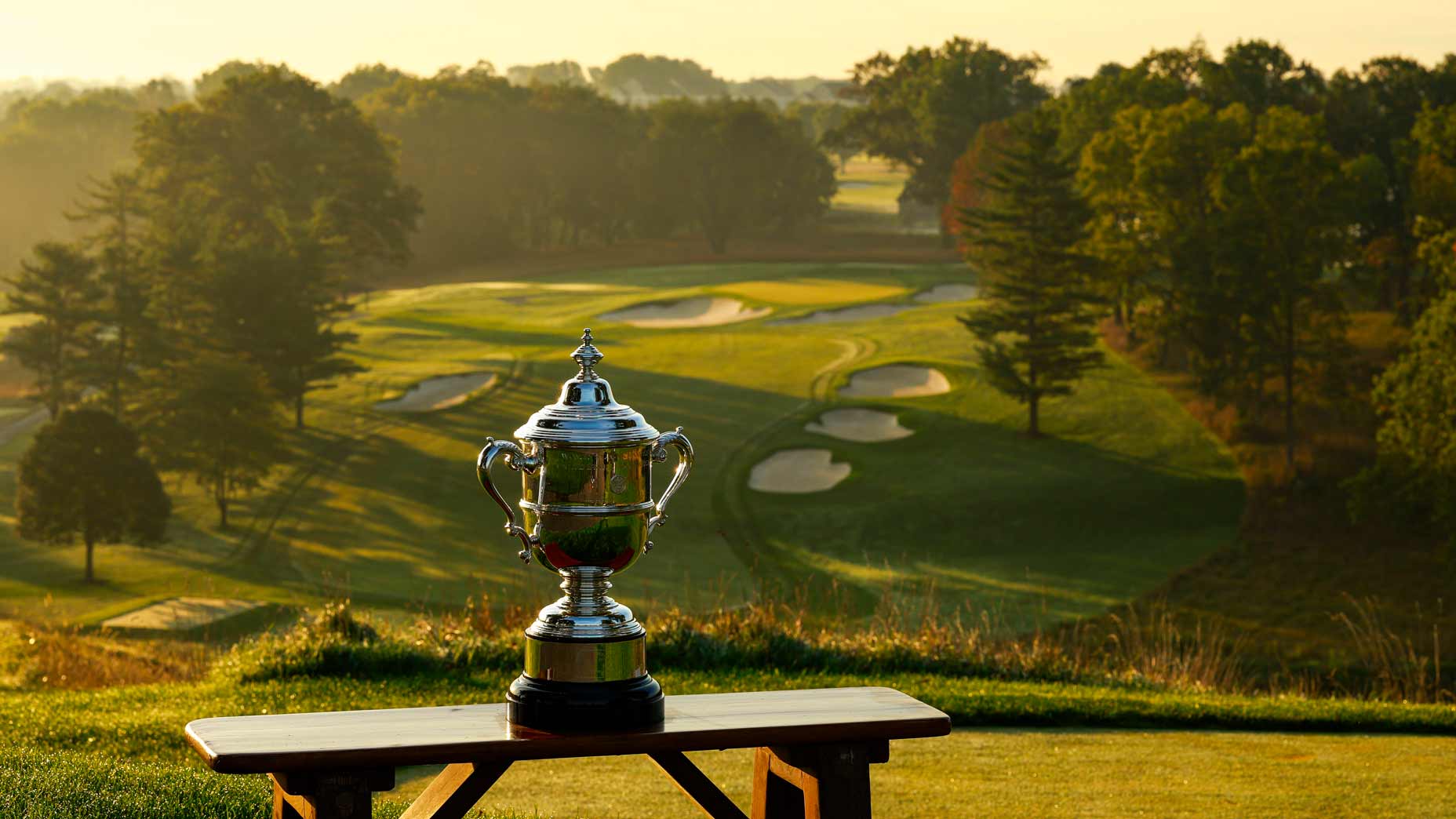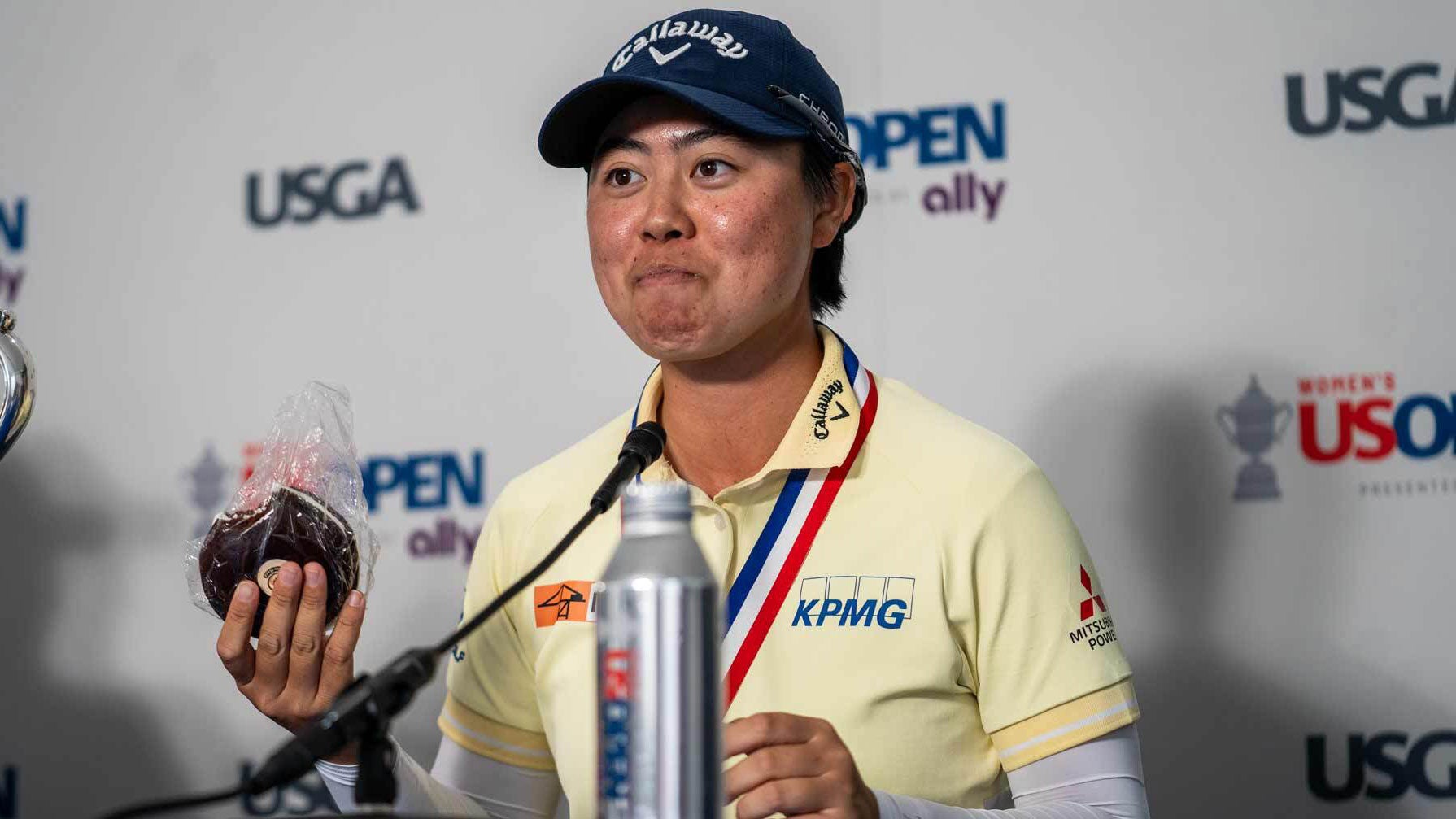SOUTHERN PINES, N.C. — Pine Needles, the host of this week’s U.S. Women’s Open, is a classic Donald Ross design in the Sandhills of North Carolina.
There’s no course in that’s hosted the Women’s Open more than Pine Needles. The USGA has crowned three champions here over the past 25 years, and this week they’ll add another.
But in the 15 years since Cristie Kerr won the last U.S. Women’s Open here, a lot has changed. Kyle Franz completed a major restoration in 2017 to recapture the essence of Donald Ross’ original design, and the results have the course looking entirely different.
The rough was replaced by sandy native areas, the bunkers are jagged and scraggly around the edges, and the greens were renovated to better fit the modern game It’s a bit like the transformation Pinehurst No. 2 underwent just down the road, which Franz also assisted on.
These changes are apparent across the entire property, but the last three holes perfectly capture the essence of what the redesign was about, and will provide a stern test for any player seeking to close out the championship on Sunday afternoon.
No. 16 — Par-3, 171 yards
The tee shot on the par-3 16th seems fairly straightforward, but it can punish you if you’re not careful. The scorecard lists it at 171 yards, meaning most players will play a mid iron, but in reality the hole plays a club or two longer up the hill and into the prevailing southwest breeze.
“There are some great subtleties that the players are hopefully going to pick up on,” Franz says. “The ones that do will have the advantage this week.”

Bunkers flank either side of the green to catch errant shots, but the defining feature of the hole is a small hollow to the front-left of the green.
“It’s really the primary focal point from a design standpoint there,” Franz says. “If a player can play a shot to the right with a little draw, the ball will bounce around that hollow. So there’s a covert advantage to hitting a slight draw to sweep it’s way around it.”
Franz also made some major aesthetic changes to the hole. The area in front of the tee had become overgrown with lovegrass, and it was removed during the restoration, giving the hole a “Pine Valley-look” in front of the tees.
No. 17 – Par-4, 426 yards
Things don’t get any easier on the penultimate hole. The sharp dogleg, 426-yard 17th is the longest par-4 on the course, and it’s an absolute beast.
“It’s a sound and tough penultimate hole,” Franz says.
Bunkers guard the interior of the dogleg, and it can be difficult to carry for short hitters. However, if you can bomb it over the trouble, your ball will catch the downslope of the fairway that will propel the ball forward, leaving a short iron in your hands.

But if you bail out to the right to avoid the trouble, the pitch of the fairway angles toward the tee box and deadens the ball, leaving a long and difficult approach into the green.
“Being a dogleg left there’s a huge advantage of carrying that left-hand side,” Franz says. “But also because of the subtleties of the ground with the micro contouring, if you can get around that corner, it’s worth it.”
The green is a generous size for the players to hit at, but if you miss the green, it falls off on all sides.
“If you miss long, the ground tips down with some roly-poly mounds on the periphery of the green that makes for some exciting recovery shots,” Franz says. “The players can putt, chip, hit bump-and-runs, and just be creative.”
No. 18, Par-4, 413 yards
The final hole is what Franz calls a “misdirection hole.” Players will lick their chops when they see the downhill dogleg to the left. Players might think this tee shot calls for a big draw, but that’s not always the case. It all depends on where the pin is located up on the green.
“It’s just an awesome finishing hole,” Franz says.

When the hole is cut on the front-left portion of the green, it’s much easier to get the ball close from the right side of the fairway. But if the flag is in the middle or the back of the green, players have the green light to rip driver as far as they can.
The 18th green also houses Franz’ favorite hole location he’s ever created. Tucked away in the back right of the green, there’s a narrow ridge that runs to the back edge. When the hole is cut near that spot, it creates havoc.
“The green used to be stunted off in that back corner,” Franz says. “There was a mound and then a saddle shape and then another mound. We just connected the two mounds to where you have this walk-the-plank pin that meanders back there. I would be stunned if they don’t put a hole location back there this week. It’s a really cool little pin.”
But regardless of whether that pin is used during member play on a Tuesday, or on Sunday at a major, the hole’s intrigue remains. That’s the sign of great course design, and a great finishing hole.











